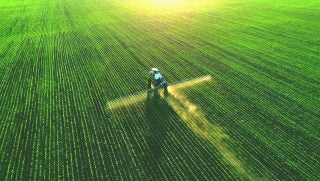We all know that, if we choose to buy an organic product from store shelves, we’re going to pay more. Organic milk may be priced 55 percent more than conventional; organic tortilla chips 33 percent more; and organic cheese 27 percent more, just as a few examples. So it’s probably no surprise that Washington State University student researchers have shown that being organic can be more profitable — especially if all the competitors in your region are small. That same research also found that the bigger the surrounding farms, the less profitable organic farmers were in comparison. It shows the prime example of why so many farmers, particularly in the Midwest, are finding more opportunities the more acres they take on.
Price premiums for organic food played a big role in profitability, according to Associate Professor Dave Crowder, an author on the paper and the journal club’s faculty advisor.
WSU’s student “journal club” published its large-scale analysis in the Proceedings of the National Academy of Sciences. The researchers also found that organic farms had 34 percent more biodiversity and 18 percent lower crop yields compared to conventional growers. The study suggests that the three factors — profitability, biodiversity, and productivity — are separate: that what makes one increase or decrease has less to do with the others than with the landscape context, farming practices, or socioeconomic issues.
“The areas that get the greatest price premium for organic food are those that have small field sizes, which are often located in more urban areas that are more connected to large consumer bases,” said Crowder. “For example, all else being equal, an organic farmer who is in the middle of Iowa may not do nearly as well as an organic farmer near Seattle where there are more consumers willing to pay higher prices for organic food.”
So it seems because urban- and suburban-area farms are smaller and more manageable without many inputs, they benefit from proximity to a customer base, relationships with those customers, and premium pricing.
As Realtors are apt to say, it’s about location, location, location — and that seems to be part of the case here.
The WSU team noted that as the size of the fields surrounding organic farms increased, the organic farms’ advantage in biodiversity increased, but they lost some of their edge in profitability. Olivia Smith, a recent WSU Ph.D. graduate and the lead author on the study, suggested that the biodiversity increased because organic farms become a “refuge for species” relocating from areas that may have only one crop on them (the suggestion, perhaps, is that organic farms often grow multiple crops, though that point is not made immediately clear).
While this was a large-scale analysis, the authors also noted limitations in available data as most studies were focused on developed countries, and the only available studies on profitability with location information were in the U.S. Smith said more research is needed from less developed parts of the world, particularly in the tropics.


